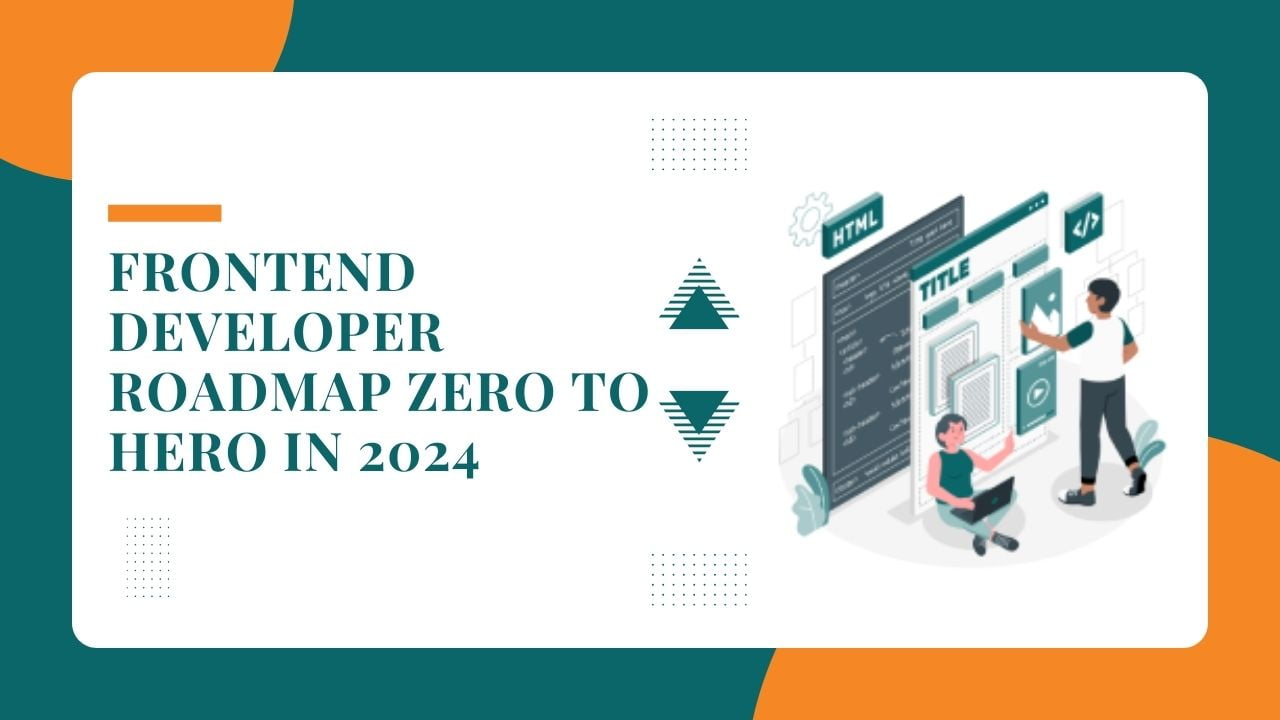
03/10/2024

Since the digital world is changing so quickly, there is an unprecedented demand for frontend developers with the necessary skills. The art and science of creating a website’s visual and interactive elements—the parts that users engage with directly—is known as frontend development. It is the point at which code and design come together to create a seamless, aesthetically beautiful, and functional user experience.
To make static designs come to life on the web, frontend developers are in charge of converting wireframes and design mockups into code. As developers are responsible for making sure a website is not only aesthetically pleasing but also responsive, accessible, and performant, this position calls for a unique combination of technical expertise and creativity. To create unified digital experiences, they collaborate closely with designers, backend developers, and other stakeholders. Frontend developers do more than just write code; they are also problem solvers that iterate and optimize continuously to enhance user experience and solve problems that crop up in a dynamic digital environment.
The frontend is the public face of any web application in the era of digital transformation. Being the initial point of contact between the customer and the brand, it plays a crucial role in the user experience as a whole. A well-designed front end may mean the difference between a person spending a few seconds on your page and departing right away. It increases user interaction, fosters trust, and eventually affects conversions. As companies prioritize the customer experience, frontend developers play an ever-more-important role. They are the designers of the digital interface, making sure it is user-friendly, quick, and available to a wide range of users.
The field of frontend development is full of tools and technologies that improve the end product and speed up the development process. Beyond the fundamentals of HTML, CSS, and JavaScript, a multitude of libraries, frameworks, and tools are available to enhance code quality and streamline workflow. Frameworks such as React.js, Vue.js, and Angular have become industry standards, making it simple for developers to create intricate, interactive user interfaces. Code management and collaboration are made easier by platforms like GitHub and version control systems like Git, while tools like Webpack and Babel automate processes like bundling and transpiling. Any frontend developer hoping to be successful in 2024 has to comprehend and become proficient in these technologies.
The first step in becoming a frontend developer is to become proficient in HTML, CSS, and JavaScript, the fundamental building elements of the web. Every website is built on these technologies, so any aspirant developer must have a firm grasp of them.
The first step in becoming a frontend developer is to become proficient in HTML, CSS, and JavaScript, the fundamental building elements of the web. Every website is built on these technologies, so any aspirant developer must have a firm grasp of them.
While HTML gives your web pages structure, CSS (Cascading Style Sheets) gives them flair and individuality. By controlling the layout, color scheme, fonts, and overall visual style, CSS enables you to build stunning, user-friendly websites that are responsive. Understanding the box model, flexbox, grid layouts, and responsive design principles are essential to becoming a CSS master. It’s essential to making sure your websites appear amazing on PCs and smartphones alike.
JavaScript is the online programming language that gives websites dynamic behavior and interactivity. JavaScript allows you to develop features that don’t need a page refresh, such form validations, sliders, and real-time data updates. You will study more complex ideas as you learn them, such as asynchronous programming, event handling, and DOM manipulation, which will help you create complex, interactive user interfaces.
Now that you have a rudimentary understanding of HTML, CSS, and JavaScript, you can create your own straightforward webpage. This practical project will help you get experience in organizing, designing, and incorporating interactive elements into web pages, strengthening your understanding in the process. Starting with a blank canvas, you’ll progressively create a completely functional webpage by putting all you’ve learned into practice.
It’s time to delve deeper into more complex frontend topics to develop your skills once you have a strong foundation. These ideas are fundamental to creating cutting-edge, effective websites that satisfy the needs of contemporary users.
These days, responsive site design is a need rather than an extravagance. Users visit websites using a variety of devices, from giant desktop monitors to smartphones, therefore it’s imperative that your website works and looks good across the board. This entails creating designs that adjust to various devices by utilizing fluid grids, media queries, and flexible layouts. Additionally, you will study mobile-first design, which is an approach that puts the mobile user experience first by designing first for smaller screens and scaling up later.
It can get harder to organize and maintain your CSS as it gets more complicated. This is where CSS preprocessors such as LESS (Leaner Style Sheets) and SASS (Syntactically Awesome Style Sheets) become useful. With the addition of features like variables, nesting, and mixins, these tools enhance the functionality of CSS and facilitate the writing of more readable, manageable code. You can improve your ability to design complex stylesheets and optimize your workflow by becoming proficient with preprocessors.
Modern versions of JavaScript, such as ES6+, bring powerful new capabilities that make code more expressive and efficient. JavaScript has grown tremendously over the years. You’ll learn about ideas that simplify and improve readability of your code, like destructuring, classes, arrow functions, and template literals. Asynchronous programming concepts, including as Promises, async/await, and AJAX, are also essential for managing tasks like retrieving data from an API and carrying out background operations without interfering with the user interface.
Making your website accessible online guarantees that users with impairments and individuals of all abilities may use it. Making your website accessible to all users entails adhering to standards such as the Web Content Accessibility Guidelines (WCAG) to ensure that it is easy to navigate and use. You’ll discover how to incorporate keyboard-friendly navigation, make use of semantic HTML, offer alternate text for images, and integrate accessible navigation on your website. Setting accessibility as a top priority involves more than just being inclusive; it also involves reaching a larger audience and abiding by the law.
Web development has been transformed by frontend frameworks and libraries, which make it simpler to create intricate, dynamic apps. These tools offer pre-built structures and components that facilitate faster development and better maintainability of the code.
The de facto standard for creating contemporary web applications is React.js. React is a robust toolkit for building user interfaces using reusable components that was developed by Facebook. It offers a declarative syntax that simplifies the management of complicated user interfaces and leverages a virtual DOM to maximize speed. You will gain knowledge of JSX, state management, component lifecycle, and building React single-page apps (SPAs).
Although React is the industry standard for frontend development, Vue.js and Angular present strong alternatives that can be more appropriate for specific projects. Vue.js is a popular choice for smaller projects or for bringing interactivity to already-existing applications because of its simplicity and ease of integration. On the other side, Google created the extensive framework known as Angular, which offers all the tools required to create enterprise-level, large-scale apps. Strong features like dependency injection, two-way data binding, and a CLI for scaffolding projects are included.
Keeping track of state is harder as your apps get more complicated. Your application’s state may be centrally managed and centralized with the use of state management solutions like Redux and the Context API, which facilitates scaling, debugging, and maintenance. Redux is especially helpful in large systems where state management can get complicated because of its reliable state container. For smaller projects or situations where you need to transmit data around the component tree without using props, React’s Context API is a wonderful alternative.
Web programs known as single-page applications (SPAs) load just one HTML page and change it dynamically based on user interactions. A more seamless and responsive user experience, akin to a desktop application, is offered by SPAs. You will learn how to create SPAs that manage state management, routing, and data fetching, giving users quick, seamless experiences, using frameworks such as React, Vue, or Angular.
Gaining expertise in the tools and best practices that accelerate development and guarantee code quality is crucial for frontend developers to succeed. With the use of these tools, you may efficiently communicate, automate activities, and maintain a high coding standard.
The foundation of collaborative development is version control, which enables several developers to collaborate on the same project without running into problems. The most popular version control system is called Git, and developers host and distribute their code on GitHub. You will gain knowledge on how to establish repositories, manage branches, commit changes, and work together on pull requests. Any developer should be familiar with Git and GitHub since they not only make code management easier but also let you contribute to open-source projects and show off your work to potential employers.
Bundling, transpiling, and minifying are just a few of the many activities that modern frontend developers must perform in addition to developing code. These chores are automated by tools like Webpack and Babel, which improves the productivity of your development process. While Babel enables you to write modern JavaScript that functions in older browsers, Webpack is a module bundler that condenses your code into a single, efficient file. By automating processes like testing, creating, and deploying your application, NPM scripts help you optimize your workflow and lower the risk of mistakes.
In order to make sure that your code functions as intended and performs properly, debugging and testing are essential. You may examine and debug your code in real time with debugging tools like Chrome DevTools, finding problems with layout, performance, and network requests. Writing automated tests to find defects early and guarantee the dependability of your code is made possible by testing frameworks such as Jest and Mocha. Testing and debugging should be a part of your workflow because they will result in better code and lower production error rates.
An integrated development environment (IDE) or code editor that is not appropriate for your needs can seriously hinder your development productivity. Code completion, syntax highlighting, and an integrated terminal are just a few of the tools that editors like Visual Studio Code, Sublime Text, and Atom provide to make writing and managing code easier. More powerful features, such integrated version control and sophisticated debugging tools, are offered by IDEs like WebStorm and Eclipse. The best tool for you will depend on your preferences and routine, but getting proficient with your editor or IDE is essential to become a more productive developer.
Being a frontend developer is an exciting and demanding career path. You’ll develop the abilities required to make engaging, user-friendly web applications as you go from studying the fundamentals to becoming an expert in more complex ideas and techniques. A clear route to success is provided by the frontend developer roadmap for 2024, regardless of your level of experience or desire to progress in your profession. You can move from zero to hero in the field of frontend development if you maintain your curiosity, learn new things constantly, and rise to new difficulties.